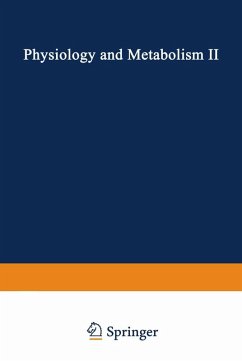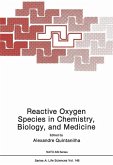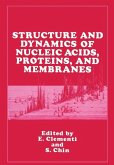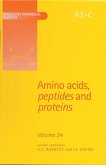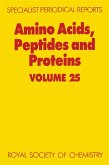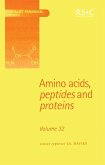The Bile Acids, Chemistry, Physiology, and Metabolism (eBook, PDF)
Volume 2: Physiology and Metabolism
Redaktion: Nair, P.
73,95 €
73,95 €
inkl. MwSt.
Sofort per Download lieferbar

37 °P sammeln
73,95 €
Als Download kaufen

73,95 €
inkl. MwSt.
Sofort per Download lieferbar

37 °P sammeln
Jetzt verschenken
Alle Infos zum eBook verschenken
73,95 €
inkl. MwSt.
Sofort per Download lieferbar
Alle Infos zum eBook verschenken

37 °P sammeln
The Bile Acids, Chemistry, Physiology, and Metabolism (eBook, PDF)
Volume 2: Physiology and Metabolism
Redaktion: Nair, P.
- Format: PDF
- Merkliste
- Auf die Merkliste
- Bewerten Bewerten
- Teilen
- Produkt teilen
- Produkterinnerung
- Produkterinnerung

Bitte loggen Sie sich zunächst in Ihr Kundenkonto ein oder registrieren Sie sich bei
bücher.de, um das eBook-Abo tolino select nutzen zu können.
Hier können Sie sich einloggen
Hier können Sie sich einloggen
Sie sind bereits eingeloggt. Klicken Sie auf 2. tolino select Abo, um fortzufahren.

Bitte loggen Sie sich zunächst in Ihr Kundenkonto ein oder registrieren Sie sich bei bücher.de, um das eBook-Abo tolino select nutzen zu können.
Zur Zeit liegt uns keine Inhaltsangabe vor.
- Geräte: PC
- ohne Kopierschutz
- eBook Hilfe
- Größe: 32.8MB
Andere Kunden interessierten sich auch für
![The Bile Acids Chemistry, Physiology, and Metabolism (eBook, PDF) The Bile Acids Chemistry, Physiology, and Metabolism (eBook, PDF)]() The Bile Acids Chemistry, Physiology, and Metabolism (eBook, PDF)73,95 €
The Bile Acids Chemistry, Physiology, and Metabolism (eBook, PDF)73,95 €![The Bile Acids: Chemistry, Physiology, and Metabolism (eBook, PDF) The Bile Acids: Chemistry, Physiology, and Metabolism (eBook, PDF)]() The Bile Acids: Chemistry, Physiology, and Metabolism (eBook, PDF)73,95 €
The Bile Acids: Chemistry, Physiology, and Metabolism (eBook, PDF)73,95 €![Reactive Oxygen Species in Chemistry, Biology, and Medicine (eBook, PDF) Reactive Oxygen Species in Chemistry, Biology, and Medicine (eBook, PDF)]() Reactive Oxygen Species in Chemistry, Biology, and Medicine (eBook, PDF)40,95 €
Reactive Oxygen Species in Chemistry, Biology, and Medicine (eBook, PDF)40,95 €![Structure and Dynamics of Nucleic Acids, Proteins, and Membranes (eBook, PDF) Structure and Dynamics of Nucleic Acids, Proteins, and Membranes (eBook, PDF)]() E. ClementiStructure and Dynamics of Nucleic Acids, Proteins, and Membranes (eBook, PDF)40,95 €
E. ClementiStructure and Dynamics of Nucleic Acids, Proteins, and Membranes (eBook, PDF)40,95 €![Amino Acids, Peptides and Proteins (eBook, PDF) Amino Acids, Peptides and Proteins (eBook, PDF)]() Amino Acids, Peptides and Proteins (eBook, PDF)326,95 €
Amino Acids, Peptides and Proteins (eBook, PDF)326,95 €![Amino Acids, Peptides and Proteins (eBook, PDF) Amino Acids, Peptides and Proteins (eBook, PDF)]() Amino Acids, Peptides and Proteins (eBook, PDF)326,95 €
Amino Acids, Peptides and Proteins (eBook, PDF)326,95 €![Amino Acids, Peptides and Proteins (eBook, PDF) Amino Acids, Peptides and Proteins (eBook, PDF)]() Amino Acids, Peptides and Proteins (eBook, PDF)326,95 €
Amino Acids, Peptides and Proteins (eBook, PDF)326,95 €-
-
-
Zur Zeit liegt uns keine Inhaltsangabe vor.
Dieser Download kann aus rechtlichen Gründen nur mit Rechnungsadresse in A, B, BG, CY, CZ, D, DK, EW, E, FIN, F, GR, HR, H, IRL, I, LT, L, LR, M, NL, PL, P, R, S, SLO, SK ausgeliefert werden.
Produktdetails
- Produktdetails
- Verlag: Springer US
- Seitenzahl: 329
- Erscheinungstermin: 6. Dezember 2012
- Englisch
- ISBN-13: 9781468408980
- Artikelnr.: 44172216
- Verlag: Springer US
- Seitenzahl: 329
- Erscheinungstermin: 6. Dezember 2012
- Englisch
- ISBN-13: 9781468408980
- Artikelnr.: 44172216
- Herstellerkennzeichnung Die Herstellerinformationen sind derzeit nicht verfügbar.
1 Mechanisms of Bile Acid Biosynthesis.- I. Introduction.- II. Formation of Cholic Acid.- III. Formation of Chenodeoxycholic Acid.- IV. Formation of Other Primary Bile Acids.- V. Conjugation of Bile Acids.- VI. Regulation of Bile Acid Formation.- VII. Formation of Bile Salts in "Primitive" Animals.- References.- 2 Bile Salt Transport Systems.- I. Introduction.- II. Active Transport in the Intestine.- III. Passive Proximal Intestinal Absorption of Bile Salts.- IV. Passive Absorption of Bile Salts in the Lower Gastrointestinal Tract.- V. The Transport of Bile Salts in the Liver.- VI. Renal Transport of Bile Salts.- References.- 3 Bile Salt Metabolism in Man.- I. Introduction.- II. Primary Bile Salts in Man.- III. Pathways for Primary Bile Salt Formation in Man.- IV. Synthesis Rates.- V. Maximum Synthesis Rates.- VI. Relative Synthesis Rates in Liver Disease.- VII. Formation of Secondary Bile Acids in Man.- VIII. Amino Acid Conjugates.- IX. Sulfate Esters.- X. Altered Bile Salt Metabolism with Hepatobiliary Disorders.- XI. Disease Groups.- XII. Portal Cirrhosis.- XIII. Bile Duct Obstruction.- XIV. Hepatitis.- XV. Alcoholic Liver Injury.- XVI. Drug-Induced Jaundice.- XVII. Bile Salts and Pruritus.- XVIII. Pruritus and Pregnancy.- XIX. Lithocholic Acid and Liver Injury.- XX. Dissociated Jaundice.- XXI. Conjugation in Hepatobiliary Disorders.- XXII. Stagnant Loop Syndrome.- XXIII. Bile Salts and Target Cells.- XXIV. Excretion in Urine and Feces.- XXV. Feces.- XXVI. Enteroliths.- XXVII. Therapeutic Agents in Bile Salts.- XXVIII. Anion Exchange Resins.- XXIX. Antibiotics.- References.- 4 Newer Aspects of Bile Salt Metabolism in Intestinal Disease.- I. General Considerations of Experimental Methods Used in These Clinical Investigations.- II. Studies of EnterohepaticCirculation of Bile Salts in Patients with Diseases Primarily Involving the Distal Small Intestine.- III. Studies of Enterohepatic Circulation of Bile Salts in Patients with Diseases Primarily Involving the Proximal Small Intestine.- References.- 5 Bile Acids and the Intestinal Absorption of Fat and Electrolytes in Health and Disease.- I. Introduction.- II. Transport Function of Bile Acids During Fat Digestion and Absorption.- III. Influence of Bile Acids on Water and Electrolyte Transport in the Intestinal Tract 147.- References.- 6 Experimental Cholelithiasis.- I. Introduction.- II. Stasis and Infection.- III. Cholesterol Stones.- IV. Calcium Stones.- V. Vitamin A Deficiency.- VI. Conclusions.- References.- 7 Clinical Implications of Bile Acid Metabolism in Man.- I. Introduction.- II. Synthesis of Primary Bile Acids.- III. Enterohepatic Circulation of Bile Acids.- IV. Quantitation of Bile Acid Metabolism.- V. Physiological Functions of Bile Acids.- VI. Bile Salt Metabolism in Physiological Conditions.- VII. Bile Salt Metabolism in Clinical Conditions.- VIII. Drugs Affecting Bile Acid Excretion.- References.- 8 Effect of Hormones on Bile Acid Metabolism.- I. Introduction.- II. Thyroid Hormones.- III. Pituitary Hormones.- IV. Gonadal Hormones.- V. Adrenal Hormones.- VI. Conclusion.- References.- 9 Enzymes in Bile Acid Metabolism.- I. Introduction.- II. Formation of the Peptide Bond of Conjugated Bile Acids.- III. Peptide Bond Hydrolases of Bile Acid Conjugates.- IV. Hydroxysteroid Oxidoreductases and Related Enzymes.- V. Conclusion.- References.- 10 Action of Hypolipidemic Drugs on Bile Acid Metabolism.- I. Introduction.- II. Nicotinic Acid.- III. Neomycin.- IV. Ethyl p-Chlorophenoxyisobutyrate (Clofibrate, Atromid-S).- V. Cholestyramine.- VI. Other Compounds.- VII. Mitochondrial Oxidation of Cholesterol.- VIII. Conclusion.- References.- 11 Bile Acid Metabolism in Gnotobiotic Animals.- I. Introduction.- II. Studies of Cholesterol Catabolism to Bile Acids in Germfree Animals.- III. Bile Acid Pool Sizes, Turnover Rates, and Physiological Observations in Germfree versus Conventional Animals.- IV. State of Bile Acids in the Intestinal Lumen.- V. Quantitative Fecal Excretion of Bile Acids by Germfree and Conventional Animals.- VI. Qualitative Changes in Bile Acids as a Result of Microbiological Interaction.- VII. Conclusions.- References.- Note Added in Proof.- Author Index.
1 Mechanisms of Bile Acid Biosynthesis.- I. Introduction.- II. Formation of Cholic Acid.- III. Formation of Chenodeoxycholic Acid.- IV. Formation of Other Primary Bile Acids.- V. Conjugation of Bile Acids.- VI. Regulation of Bile Acid Formation.- VII. Formation of Bile Salts in "Primitive" Animals.- References.- 2 Bile Salt Transport Systems.- I. Introduction.- II. Active Transport in the Intestine.- III. Passive Proximal Intestinal Absorption of Bile Salts.- IV. Passive Absorption of Bile Salts in the Lower Gastrointestinal Tract.- V. The Transport of Bile Salts in the Liver.- VI. Renal Transport of Bile Salts.- References.- 3 Bile Salt Metabolism in Man.- I. Introduction.- II. Primary Bile Salts in Man.- III. Pathways for Primary Bile Salt Formation in Man.- IV. Synthesis Rates.- V. Maximum Synthesis Rates.- VI. Relative Synthesis Rates in Liver Disease.- VII. Formation of Secondary Bile Acids in Man.- VIII. Amino Acid Conjugates.- IX. Sulfate Esters.- X. Altered Bile Salt Metabolism with Hepatobiliary Disorders.- XI. Disease Groups.- XII. Portal Cirrhosis.- XIII. Bile Duct Obstruction.- XIV. Hepatitis.- XV. Alcoholic Liver Injury.- XVI. Drug-Induced Jaundice.- XVII. Bile Salts and Pruritus.- XVIII. Pruritus and Pregnancy.- XIX. Lithocholic Acid and Liver Injury.- XX. Dissociated Jaundice.- XXI. Conjugation in Hepatobiliary Disorders.- XXII. Stagnant Loop Syndrome.- XXIII. Bile Salts and Target Cells.- XXIV. Excretion in Urine and Feces.- XXV. Feces.- XXVI. Enteroliths.- XXVII. Therapeutic Agents in Bile Salts.- XXVIII. Anion Exchange Resins.- XXIX. Antibiotics.- References.- 4 Newer Aspects of Bile Salt Metabolism in Intestinal Disease.- I. General Considerations of Experimental Methods Used in These Clinical Investigations.- II. Studies of EnterohepaticCirculation of Bile Salts in Patients with Diseases Primarily Involving the Distal Small Intestine.- III. Studies of Enterohepatic Circulation of Bile Salts in Patients with Diseases Primarily Involving the Proximal Small Intestine.- References.- 5 Bile Acids and the Intestinal Absorption of Fat and Electrolytes in Health and Disease.- I. Introduction.- II. Transport Function of Bile Acids During Fat Digestion and Absorption.- III. Influence of Bile Acids on Water and Electrolyte Transport in the Intestinal Tract 147.- References.- 6 Experimental Cholelithiasis.- I. Introduction.- II. Stasis and Infection.- III. Cholesterol Stones.- IV. Calcium Stones.- V. Vitamin A Deficiency.- VI. Conclusions.- References.- 7 Clinical Implications of Bile Acid Metabolism in Man.- I. Introduction.- II. Synthesis of Primary Bile Acids.- III. Enterohepatic Circulation of Bile Acids.- IV. Quantitation of Bile Acid Metabolism.- V. Physiological Functions of Bile Acids.- VI. Bile Salt Metabolism in Physiological Conditions.- VII. Bile Salt Metabolism in Clinical Conditions.- VIII. Drugs Affecting Bile Acid Excretion.- References.- 8 Effect of Hormones on Bile Acid Metabolism.- I. Introduction.- II. Thyroid Hormones.- III. Pituitary Hormones.- IV. Gonadal Hormones.- V. Adrenal Hormones.- VI. Conclusion.- References.- 9 Enzymes in Bile Acid Metabolism.- I. Introduction.- II. Formation of the Peptide Bond of Conjugated Bile Acids.- III. Peptide Bond Hydrolases of Bile Acid Conjugates.- IV. Hydroxysteroid Oxidoreductases and Related Enzymes.- V. Conclusion.- References.- 10 Action of Hypolipidemic Drugs on Bile Acid Metabolism.- I. Introduction.- II. Nicotinic Acid.- III. Neomycin.- IV. Ethyl p-Chlorophenoxyisobutyrate (Clofibrate, Atromid-S).- V. Cholestyramine.- VI. Other Compounds.- VII. Mitochondrial Oxidation of Cholesterol.- VIII. Conclusion.- References.- 11 Bile Acid Metabolism in Gnotobiotic Animals.- I. Introduction.- II. Studies of Cholesterol Catabolism to Bile Acids in Germfree Animals.- III. Bile Acid Pool Sizes, Turnover Rates, and Physiological Observations in Germfree versus Conventional Animals.- IV. State of Bile Acids in the Intestinal Lumen.- V. Quantitative Fecal Excretion of Bile Acids by Germfree and Conventional Animals.- VI. Qualitative Changes in Bile Acids as a Result of Microbiological Interaction.- VII. Conclusions.- References.- Note Added in Proof.- Author Index.
